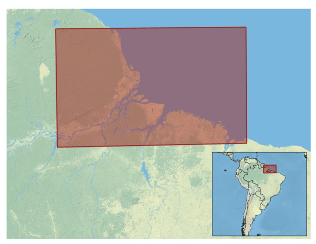November 5, 2025
Since 2023 EcoWB has been contributing its technical expertise to a multi-phase restoration initiative led by Asociación Mangle and the Mangrove Action Project in El Salvador’s Jiquilisco Bay, one of Central America’s largest and most diverse mangrove ecosystems. Together, these organizations and our technical collaborators aim to conserve, restore, and sustainably manage this globally significant ecosystem that supports biodiversity and local livelihoods. Its mangroves are globally important in sequestering carbon to mitigate the effects of climate change. Jiquilisco Bay, located on the Pacific coast of southeastern El Salvador, is a place of exceptional natural richness and ecological importance. Recognized as both a UNESCO Biosphere Reserve and a Ramsar Wetland of International Importance, it is home to one of Central America’s largest and most diverse mangrove forests, covering more than 20,000 hectares. These mangroves form the heart of the Jiquilisco Bay Biosphere Reserve, which spans around 400 km². It includes a mosaic of bays, channels, sandy beaches, islands, freshwater lagoons, and coastal forests. The reserve stretches along 50 kilometers of coastline between the Lempa River and the Jucuarán mountain range. The mangroves of Jiquilisco Bay—dominated by red, black, white, and buttonwood mangrove species—play a vital role in keeping the coast alive and protected. They reduce erosion, lessen storm impacts, and filter pollutants, acting as natural shields for coastal communities. Beneath their tangled roots, they are habitat for an astonishing variety of life, including fish, crabs, and sea turtles, such as the hawksbill, green, olive ridley, and leatherback, which are at risk of extinction. Above the water line they are vital for birds and other terrestrial animals. Beyond their ecological value, these mangroves are deeply connected to local communities, supporting fisheries, providing food and materials, and sustaining livelihoods. The project’s first phase focused on understanding trends in mangrove distribution and some of the factors influencing their health. Using Landsat satellite data and advanced machine learning techniques, EcoWB helped develop high-resolution maps of mangrove cover spanning three decades. This analysis identified key influences on mangrove viability, such as proximity to agriculture, urban expansion, elevation, soil conditions, and temperature. Building on that foundation, EcoWB supported a detailed assessment of mangrove cover changes and corresponding health and analysis of canopy height and aboveground biomass during a ten-year period (2016–2025) using Sentinel satellite and LiDAR data. The height and biomass (plant material) can be related to health, age, species composition, and site characteristics. The study underscored the need for continued protection, hydrological restoration, and community stewardship to strengthen ecosystem resilience. EcoWB is now helping translate that information into action through the creation of an open-source, interactive web platform. This tool will enable Asociación Mangle, the Mangrove Action Project, NGOs, government agencies, and local communities to visualize mangrove health trends and help identify priority conservation and restoration areas. Through knowledge transfer, EcoWB and its partners aim to empower local communities to make informed, science-based decisions for the long-term management of Jiquilisco Bay. This initiative demonstrates how collaboration, innovation, and community leadership can come together to safeguard one of Central America’s most vital coastal ecosystems. By combining cutting-edge science with local knowledge, EcoWB and its partners are helping ensure that Jiquilisco Bay’s mangroves—and the communities that depend on them—continue to thrive for generations to come.





